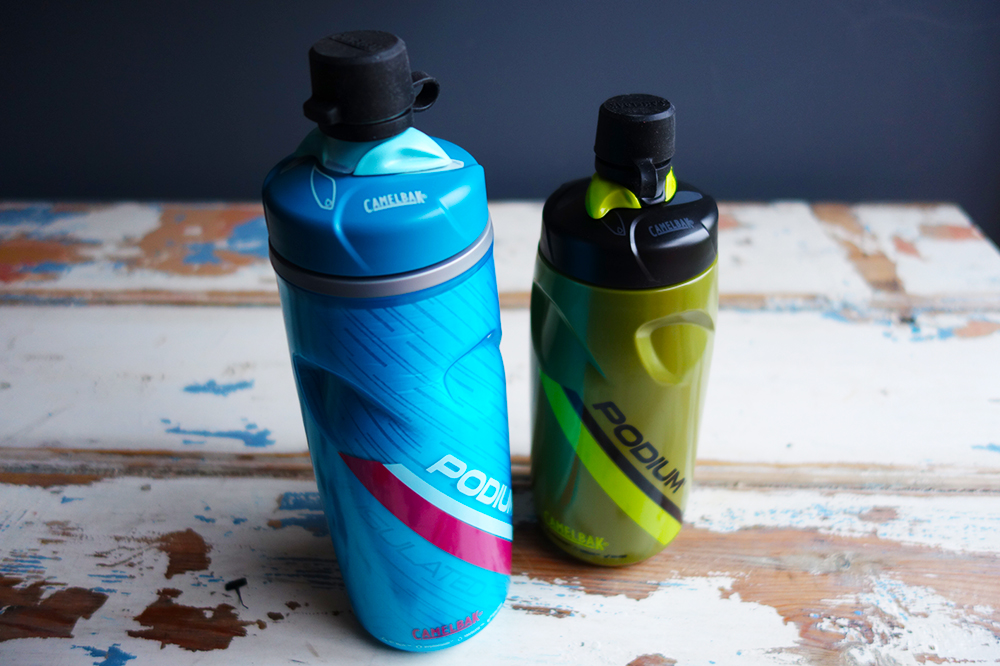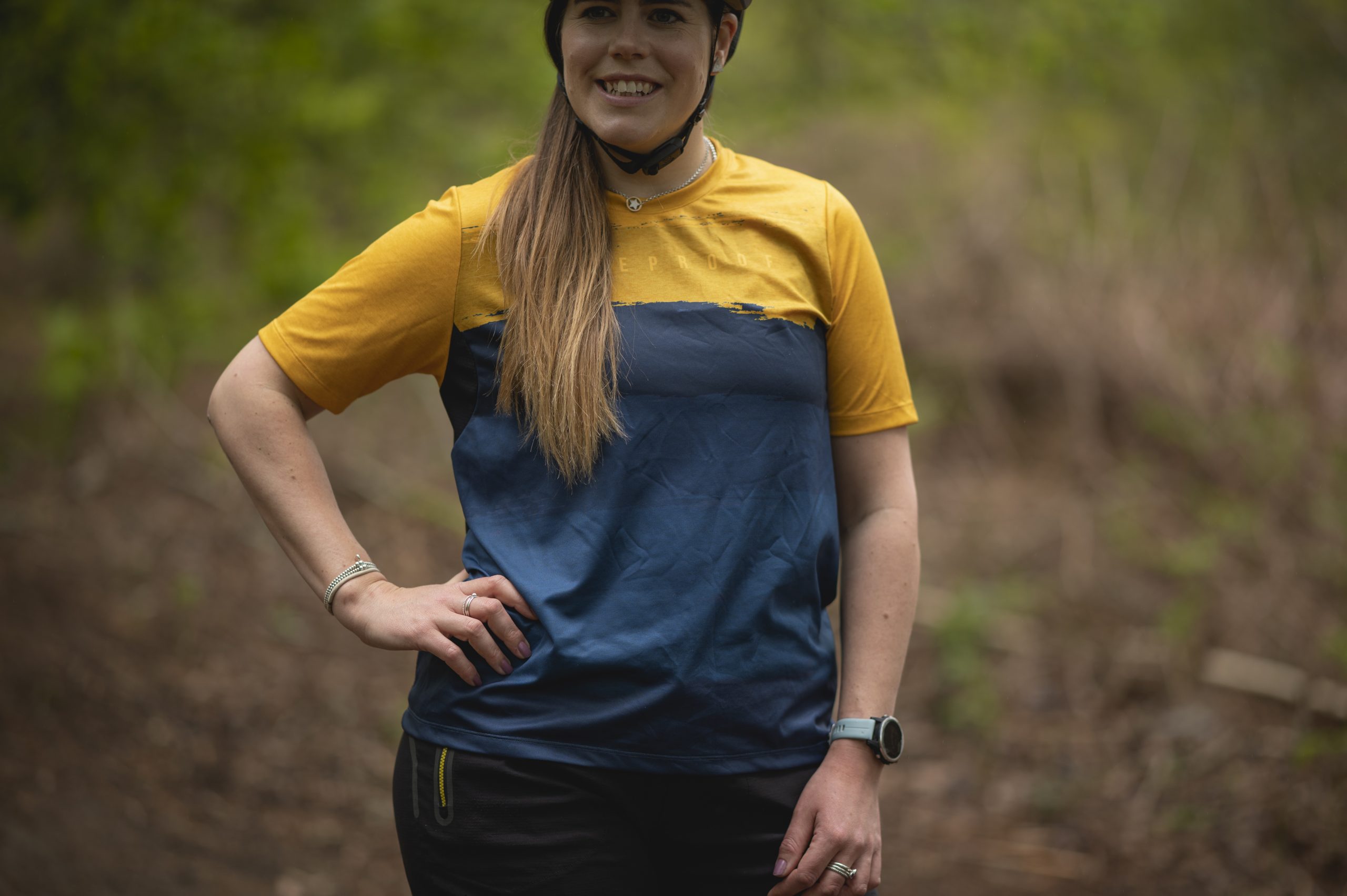Products You May Like
How do you stay cool on a mountain bike during a heatwave? When temperatures soar you need to make sure you’re hydrated, protected and don’t overheat; our top tips and expert advice will help you stay safe
So you want to ride your mountain bike in a heat wave? If you just can’t miss out on a day of riding, you can take a few extra precautions to ensure you have fun without overheating.
1. Stay hydrated

To avoid dehydration, take plenty of liquid with you to drink when you go out riding, and make sure you drink plenty before you go and again when you get back. Being thirsty on a ride isn’t just distracting; dehydration can affect your cognitive function, potentially increasing your chances of crashing, and severe dehydration can have serious consequences in and of itself.
Dehydration is where your body loses more fluid than you take in, according to the UK’s National Health Service dehydration advice. Mild symptoms include thirst (obviously), feeling dizzy, tired, dark-coloured pee, and a dry mouth and eyes. Look out for these, and rehydrate if you notice any of them.
The general advice is around one litre every hour in temperatures over 30°C, but as the temperature rises, you’ll probably need to drink more.
2. Keep your electrolytes topped up

The banana. A classic trail snack for a reason.
In hot weather, you’ll be sweating heavily, even more so if you’re exercising, and your body will lose the essential sugars and salts, AKA electrolytes, it needs to operate efficiently. Make sure you replenish them.
You could use a flavoured hydration tablet dissolved in your hydration backpack reservoir or, if you use water bottles, alternate drinking from one with this in and one filled with water. You could also use plain rehydration salts that you can get from most pharmacies and drug stores, or make your own by adding a small pinch of salt to some fruit squash.
You can also get electrolytes from food; pickles are a popular choice, as is the good old banana. Cheese, melon, milk and nuts are also good sources. We’re thinking a nice, icy cold post-ride banana and peanut butter milkshake is sounding pretty good right about now.
3. Avoid riding during the hottest part of the day
Plan your ride to avoid the hottest parts of the day. In the UK, the MET Office recommend avoiding exercise between 11am and 3pm.
The early morning and late evening are much cooler, so head out early or late, or instead of one long ride how about two short ones each end of the day?
4. Wear light, breathable clothing

This is a bit of a no-brainer, but essentially pick your lightest, most breathable kit for any rides you have planned.
Opt for shorts instead of trousers, choose garments that are made of highly breathable fabrics or with temperature-regulating features, eg. shorts with laser-cut ventilation holes, helmets with plenty of air ports, and gloves and socks that have a finer knit.
5. Stay local
It’s tempting to want to drive off somewhere to go ride, but you’ll do yourself (or your bike) no favours by being in a hot vehicle for a period of time, especially if you get stuck in traffic because everyone else has had the same idea.
Or if your vehicle has incredible air conditioning, going from cool car to hot trail will also be a bit of a shock to your system – if you are going to do this, give yourself a bit of time to acclimatise to the outdoor temperature before speeding up that first climb.
So stay local if you can, hit your nearby trails, and you’ll also be closer to home when you want to cool off afterwards.
6. Head for the trees

Rooty runs through the forest are too good for the hardcore to hoard. Pic: Andy Lloyd.
Got a forest near you? Head there for your ride.
The temperature in shaded areas under trees is usually considerably cooler; between 1°C to 5°C in fact, according to the United States Environmental Protection Agency. This isn’t just because the trees provide shade, but also because of something called transpiration; the trees release water which evaporates, drawing heat away with it. Thank you trees!
7. Apply plenty of sunscreen

Buy some SPF30 (or above) sunscreen. Apply it liberally to every area of your body that’s not covered by clothes and that will be exposed to the sun. Repeat ever couple of hours.
Sun burn is not pleasant, and skin cancer is considerably worse, so slop that stuff on and keep applying it throughout the day as you’ll sweat it off over the course of a ride. Modern sun screens are inexpensive, and easy to apply – we like the spray-on ones.
8. Cover up if you can
It can seem counterintuitive, but if you can cover up areas that are frequently exposed to the sun with light, breathable fabrics, you’ll add an extra level of sun protection. What’s more, many modern breathable fabrics might even help you feel cooler, thanks to moisture evaporating from the fabric and drawing your body heat with it. This is particularly important if you’re going be out in the open and not sheltered by trees.
Think about a light breathable bandana or buff for the back of your neck, a loose long-sleeved top and full-finger gloves.
9. Protect your eyes

Your eyes are also sun-sensitive, not to mention the fact that there’s likely to be a load of dust kicked up when riding in a heatwave. Get a good pair of cycling sunglasses with tinted, mirrored lenses that will give your eyes protection from UV rays and brightness.
Chances are your helmet has a peak anyway, but these are also handy for providing a bit more overhead shade for your face and eyes.
10. Don’t ride too hard
You may be in the middle of training for an event, looking to boost your fitness, or only have a limited window of time to get out for a spin, but a heat wave is not the time to push your body to the limit.
Heat adds stress to your system as your body works to keep itself cool enough to operate properly. Exercise adds more heat to the mix, and therefore more stress. While you might be fine on a gentle spin, full-on max heart rate uphill sprints might be a bit much in this weather, and you don’t want to tip over into heat exhaustion or its more serious sibling, heat stroke.
So, postpone the interval training until temperatures have lowered (or leave it for the cooler early mornings) and opt for a slower, steadier pace instead.
11. Avoid alcohol
Ah, that post-ride cold beer. So very tempting. But it may be worth substituting it for a soft drink or a lower alcohol choice like a shandy or radler, as alcohol contributes to dehydration.
If you had a few drinks the night before your ride, make extra sure you’ve got plenty of liquids with you to compensate.
How hot is too hot for mountain biking?
There are some very real risks to riding in extreme temperatures, such as heat stroke, dehydration and sunburn, and if you’ve got any underlying health conditions, this adds more risk.
So while it’s obviously lovely to get out riding when the trails are dry and the sky is clear, if expert advice is to avoid exercising then ask yourself if you really need to go out for a big ride, or can you wait until temperatures drop to safer levels.
One of the main risks from riding in extreme heat is heatstroke, which is a serious condition that requires urgent medical attention. Usually, a person will display signs of heat exhaustion first; a headache, dizziness, nausea, pale clammy skin and other symptoms as described by the NHS. Severe dehydration is also no joke.
If you notice these symptoms in yourself or anyone else, you need to help the person cool down, and keep an eye on them. First aid advice for heat stroke from the Red Cross is worth knowing. And if you’re feeling at all ill because of the heat, seek advice from a medical professional.
Stay cool, enjoy your ride!

